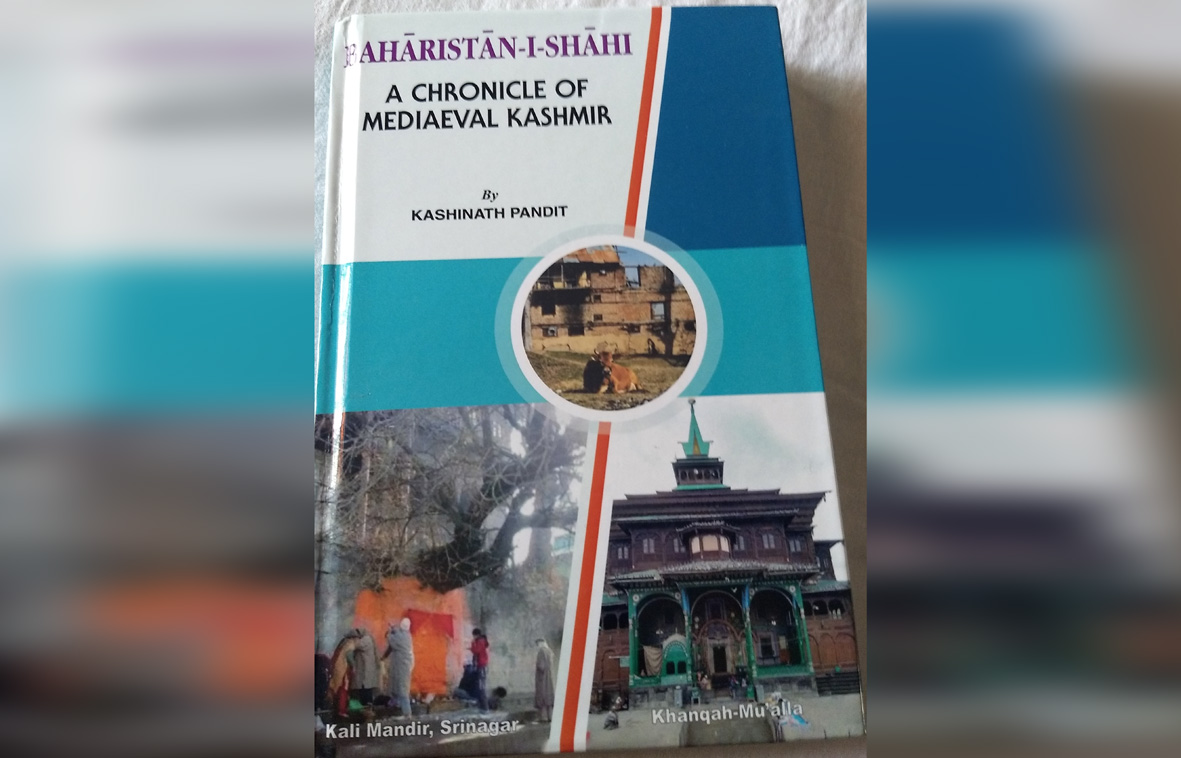Avtar Mota
Baharistan-i-Shahi
(A Chronicle of Medieval Kashmir)
By Kashinath Pandit
2nd edition, 2022, pages 314,published by Akshaya Prakashan, Delhi-110052,
Not everybody can be a good translator, for such a person has to be proficient in both the source and target languages and the culture from which they have sprung, have a good grip on writing skills, a passion for detail, and above all a professionalism of high order. Kashinath Pandit possesses them in ample measure, as is in evidence in his translation of Baharistan-i-Shahi from Farsi into English. This edition of the book is a revised version of the translation that he published in 1991.
Baharistan-i- Shahi( A Chronicle of Medieval Kashmir) is a Farsi manuscript that deals with the history of Kashmir right from the mythical origins of the place to 1614 A.D. It was translated into English by Dr Pandit for the first time in 1991 from its collated text of the two existing and reliable manuscripts existing in India Office Library and the British Museum. This Farsi text deals with the early Hindu period in a summary manner (in just 11 out of a total of 212 folios) and focuses mainly on the rule of Shahmiri Sultans and Chaks.
Translating the text was fraught with many difficulties because of the nature of the manuscript, which is in the form of one continuous narrative without segregation of the time-span of the rule of the kings that figure in it. So Dr Pandit had to divide the text into chapters pertaining to different rulers, which makes it easy for the readers to understand the sequence of events and happenings related to them. Pandit has also corrected various incorrect names of the places mentioned in the manuscript. For this, he has consulted relevant historical texts like Rajatarangini, Nilamata Purana, Ain-i-Akbari, Gazeteers of Kashmir, Buhler’s Report, Tarikh-i-Hasan, Tarikh-i-Malik Haider Chadura, and several other books. The transliteration of the Persian, Arabic and Sanskrit words and phrases has been done in accordance with the conventionally accepted system with diacritical marks wherever necessary. Pandit has also converted the Hijra yearsof the Farsi manuscript into Christian years
The single most notable feature of the translated version is the footnotes added by the translator. They add to the richness of the translated version and reveal the translator’s deep study, his sound scholarship, and his profound knowledge of history. The footnotes help even ordinary readers to understand the events contained in the text from a proper historical perspective.
Baharistan-i-Shahiis an important historical document related to an equally important historical period in the history of Kashmir. Its author appears to have been close to the rulers of his time and provides a first-hand account of the rule of the Chaks. He also appears to be close to the Sayyids of Baihaq, whom he praises lavishly. Because of this, the book provides a sharp account of some of the key events of the times, the style of governance of the rulers, their court intrigues, political rivalries, personal enmities, and battles for power. It also provides enough details about the general outlook of Shahmiri and Chak rulers, the role of the Mughal rulers, the role of Baihaqi Sayyids and of Mir Shamasu’d- Din Araki in Kashmir. One of the major issues dealt with in this book is the large-scale conversion of the Hindus of Kashmir and the demolition and destruction of their places of worship. The large-scale massacre of Hindus by Kaji Chak finds a detailed mention in the book. What Jonaraja put in a summarized form, the author of Baharistan-i-Shahi has provided in a detailed manner. The book also shows clearly that the Sayyids had too much contempt for the local Kashmiri population. The Kashmiri Hindus who were converted to Islam did not venerate the Sayyids even though they claimed high birth and stated publicly that they were “Musalman Brahmans” and superior to “Hindu Brahmans.” Baharistanendorses the greatness of Sultan Zainu’l Abidin whom Jonaraja considers the incarnation of Vishnu. Even though the author of Baharistan is not happy with the Sultan’s liberal policy towards the Hindus, he praises him for his fabulous achievements.
Apart from providing a detailed account of an important era, Bahiristan-i-Shahi is important also for its numerous references to the geography and topography of Kashmir. The book makes ample mention of lakes, villages, mountains, passes, routes, springs, rivers and boundaries of Kashmir. The chaos that resulted from the death of Sultan Zainu’l Abidin also finds detailed mention in the book. The enmity between the various groups of Kashmiri chieftains led finally to the arrival of the Mughals on the scene. The visit of Sheikh YaqoobSarfito Akbar’s court virtually paved the way for the advent of the Mughal rule in Kashmir.
In conclusion, I need to state that Baharistan-i-Shahi is a text of seminal importance for understanding the complexity of the history of Kashmir during the medieval period. We have to be grateful to Dr Kashinath Pandit for making this rare manuscript available to readers in English.


